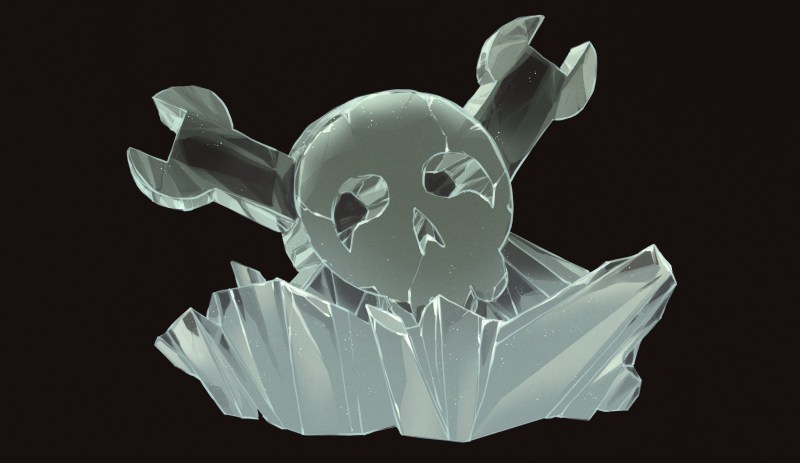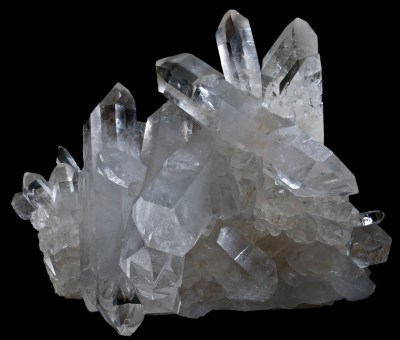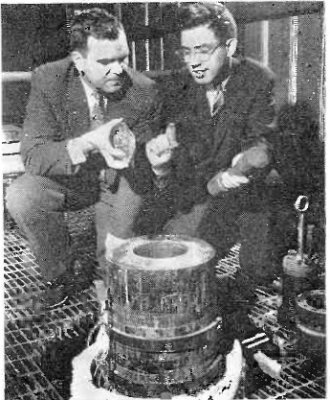
So far in this series, pretty much every material we’ve covered has had to undergo a significant industrial process to transform it from its natural state to a more useful product. Whether it’s the transformation of bauxite from reddish-brown clay to lustrous aluminum ingots, or squeezing solid sulfur out of oil and natural gas, there haven’t been many examples of commercially useful materials that are taken from the Earth and used in their natural state.
Quartz, though, is at least a partial exception to this rule. Once its unusual electrical properties were understood, crystalline quartz was sent directly from quarries and mines to factories, where they were turned into piezoelectric devices with no chemical transformation whatsoever. The magic of crystal formation had already been done by natural processes; all that was needed was a little slicing and dicing.
As it turns out, though, quartz is so immensely useful for a technological society that there’s no way for the supply of naturally formed crystals to match demand. Like copper before it, which was first discovered in natural metallic deposits that could be fashioned into tools and decorations more or less directly, we would need to discover different sources for quartz and invent chemical transformations to create our own crystals, taking cues from Mother Nature’s recipe book on the way.
Crystals Everywhere

Pick up a rock almost anywhere on Earth and chances are pretty good that there’s at least some quartz in it. Quartz is the second-most abundant mineral in the continental crust, and is present both as visible crystals, ranging in size from immense outcroppings weighing tons down to the grains of beach sand, and as cryptocrystals so small you need a microscope to see them, which are hidden within other rocks, like flint.
Chemically, quartz is nearly pure silicon dioxide (SiO2). When there are no impurities, pure quartz is water-clear and often referred to as “rock crystal”. Impurities can give transparent quartz beautiful hues, such as yellowish citrine (iron) or rose quartz (titanium, iron, and manganese). Inclusions and trapped gasses can turn quartz translucent (milky quartz) and natural irradiation can even act on stray aluminum in the crystal matrix and turn it gray (smoky quartz).
Natural quartz crystals usually have a long body with a hexagonal cross-section with six-sided pyramidal caps on each end. Quartz crystal outcroppings can be found all over the world, with notable examples in the Ouachita Mountains of Arkansas, where rockhounds harvest crystals of often ridiculous proportions, and the Mohawk Valley in New York, where the misnamed “Herkimer Diamond” is found.
Aside from its aesthetic charms, and disregarding the claims of mysterious powers made by crystal enthusiasts, quartz has a lot of industrial uses. Its abundance of silicon makes it the perfect feedstock for silicon wafer production, and fused quartz glass of nearly pure silicon dioxide is used for everything from optical communication fibers to the crucibles used to melt silicon for the Czochralski method of growing monocrystalline silicon ingots.
Natural Isn’t Always Better
The piezoelectric effect, a property of certain crystals to vibrate at a characteristic frequency when a voltage is applied across them (and vice versa), has been known since the experiments of the Curie brothers in the 1880s, with quartz being one of the main crystals they focused on. Piezoelectricity first proved its utility in World War I, with submarine warfare and the need for ultrasonic transducers for sonar. Shortly after, the twin post-war explosions of radio and telephone increased the demand for quartz crystal oscillators. Almost all of the quartz needed for these components was harvested from natural crystals, mostly from Brazil and the quarries in Arkansas, from which raw slabs were painstakingly cut, polished, and processed to make finished piezoelectric components.

But then along came World War II, and the demand for natural quartz crystals exploded. Quartz was a critical material for prosecuting the war, and the supply of natural quartz was only barely keeping up with the demand, especially since crystals had to meet stringent requirements of purity and physical characteristics, such as lack of cracks and inclusions. It was clear too that the post-war period was going to see an even greater demand for quartz thanks to a burgeoning consumer electronics market, as well as continued expansion of the telephone network and the newfangled televisions that were coming along.
Seeing the intensely manual process of harvesting natural quartz as a threat to the future of the telephone network, engineers and scientists at Bell Labs, the R&D arm of AT&T, started research in the late 1940s into commercial-scale methods for making artificial quartz crystals. Artificial synthesis of crystals has been around since the late 1800s, but only on a microscopic scale. They needed a way to grow big crystals, and a lot of them, with bonus points if the method was cheap and easy to scale up to industrial levels.
The method they came up with, hydrothermal synthesis, is basically a way to reproduce the conditions under which natural quartz crystals originally formed. It uses moderate heat — around 300°C or so — but tremendous pressure — in the range of 20,000 psi (137 mPa). The pressure vessel that’s used has to have tremendous strength; the walls are often almost a foot (30 cm) thick, and have heating elements embedded in them. But to feed these vessels, a suitable stock of material is needed, and it turns out that lower grades of natural quartz are the perfect starting point for synthetic crystals.
It Takes Quartz to Make Quartz
The beginning stages of commercial quartz mining bear a lot of resemblance to many of the mining methods we’ve looked at so far. Most non-electronic-grade quartz, known as lascas, is harvested from open-cast mines. Overburden is stripped away with heavy machinery and sometimes explosives — although blasting is never used on the quartz itself, to avoid damage from sudden and intense heating — and quartz is hauled away for processing.
After crushing, washing, sizing, and chemical treatment with various acids to dissolve away unwanted minerals, quartz lascas can be shipped off to manufacturers who specialize in taking this high-purity but disordered quartz powder to the next level — synthetic quartz.
To start hydrothermal synthesis, crushed quartz is layered into the bottom of the pressure vessel and topped with a perforated baffle plate. Water is added to the vessel along with a small amount of mineralizer — either sodium hydroxide or sodium carbonate. The mineralizer’s job is to dissolve the silicon dioxide in the quartz into sodium silicate:
Into the slurry in the pressure chamber is lowered a sturdy frame to which several thin sheets of quartz have been attached. These sheets, cut to the proper crystal orientation for the desired piezoelectric property, serve as the seed crystals upon which the synthetic crystals will grow.
With the vessel charged and sealed, heating begins. A gradient is established, with more heat being applied to the bottom of the vessel. The silica-rich water in the vessel boils, generating steam that gradually increases the pressure inside the chamber. Convection causes the process fluid to flow up through the chamber to the cooler area at the top; there, the silicates are less soluble, causing them to deposit on the seed crystals and continue their growth. Synthesis is a slow process; the crystals only add about a half-millimeter of new material every day, meaning that a commercially useful synthetic crystal can take months to create. Economies of scale are realized by making the synthesis chambers massive, big enough to create hundreds of crystals at a time.
By the time synthesis is complete, the 99.9999% pure silicon dioxide crystals are about eight kilograms in mass and are the size of your head. Synthetic quartz crystals look nothing like their natural counterparts; rather than the long hexagonal body and pyramidal caps of natural crystals, they’re more squat, having grown outward from both faces of the seed crystal sheet, and the crystal facets have a scalloped appearance. The seed crystal is often visible within the water-clear crystal, too.
Once the synthetic crystals are done growing, they need to be processed. The crystals are first ground flat in the plane parallel to the seed crystal lying inside. Diamond saws then cut the crystal into thin slices perpendicular to the ground face, called a lumber. After removing the narrow section of seed crystal from the middle, a diamond gang saw cuts the lumber into thin wafers at just the right angle across the crystal. These wafers then go through repeated lapping, slicing, and testing operations to tune their piezoelectric properties before ending up in an integrated crystal oscillator or other finished crystal component.
0 Commentaires